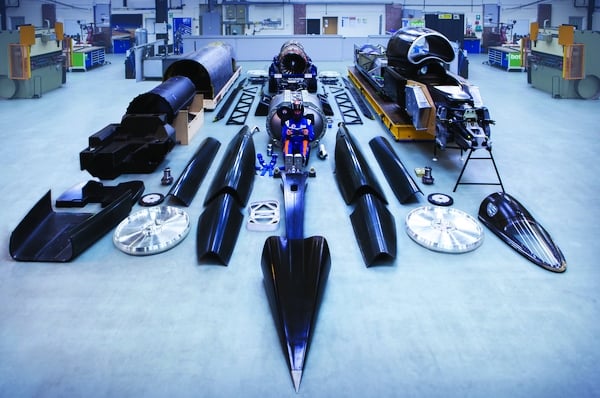Bloodhound: Britain's 1,000mph car debuts in London
The vehicle that will make Britain’s next attempt on the world land speed record has been revealed today in London
East Wintergarden in Canary Wharf was the venue for the grand reveal of Bloodhound SSC, the world’s fastest and most advanced vehicle that is the product of eight years of research, design and manufacturing involving over 350 companies and universities.
The car is the star of a free, two-day exhibition that has 8,000 confirmed visitor registrations who will be among the first to see the completed 13.5m streamliner, which uses jet and rocket motors to produce c.135,000 thrust hp to make Bloodhound the worlds’ powerful land vehicle.

The Bloodhound Project, the team behind the vehicle, say Bloodhound SSC is being shown in record attempt configuration, with its 2m high tail fin in place for the first time.
Carbon fibre panels have been partially removed on one side in order to show the technology inside the car, including the Rolls-Royce EJ200 jet engine and supercharged Jaguar V8 engine used to pump oxidizer into the Nammo rocket.
Register now to continue reading
Thanks for visiting The Engineer. You’ve now reached your monthly limit of news stories. Register for free to unlock unlimited access to all of our news coverage, as well as premium content including opinion, in-depth features and special reports.
Benefits of registering
-
In-depth insights and coverage of key emerging trends
-
Unrestricted access to special reports throughout the year
-
Daily technology news delivered straight to your inbox










Water Sector Talent Exodus Could Cripple The Sector
Maybe if things are essential for the running of a country and we want to pay a fair price we should be running these utilities on a not for profit...